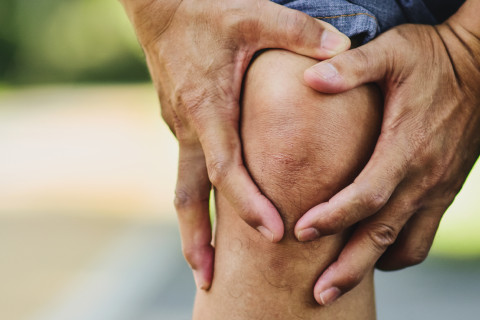The doctoral dissertation in the field of Medical Physics will be examined at the Faculty of Science and forestry, Kuopio Campus and online.
What is the topic of your doctoral research? Why is it important to study the topic?
Osteoarthritis (OA) is the most common joint disease and form of arthritis affecting approximatively 7% of the global population, more than 500 million people worldwide (2020), and more than 40 million people across Europe (2014). OA restricts patient locomotion, limits their ability to work and reduces quality of life, and it occurs typically in knee joints, feet, hands, spine, and hips. Post-traumatic OA (PTOA) causes approximately 12% of all the OA cases and tearing of the anterior cruciate ligament (ACL) is one of the leading causes of knee joint PTOA. Chondrocytes are the only cell type found in articular cartilage. They are surrounded by a thin basket-like structure, pericellular matrix (PCM), that plays an important role in signalling between the tissue and cell and provides hydrodynamic and mechanical protection to chondrocytes. Chondrocytes are responsible for the cartilage homeostasis and tissue repairment, which is regulated by the biomechanical and biochemical environment of chondrocytes. OA alters the articular cartilage structure, composition and further the environment and behaviour of chondrocytes, which causes disruption in cartilage self-repair and onset of OA.
However, the biomechanical responses of chondrocytes and the structural alterations of their environment early after PTOA are not well-known.Cartilage structure and composition are typically evaluated with destructive two-dimensional histological methods, leading to the local evaluation of the sample. More detailed local and global three-dimensional evaluation would be beneficial in cartilage and soft tissue research, and, in the characterization of pathological changes.
This thesis aims to clarify the relationship of articular cartilage tissue and chondrocyte biomechanics in different knee joint locations shortly after surgically induced anterior cruciate ligament trauma in rabbit knee joints. Moreover, the temporal changes of articular cartilage structure and biomechanical properties are evaluated after PTOA. Additionally, the suitability of a contrast agent-free micro-computed tomography imaging to evaluate three-dimensional articular cartilage structure is investigated.
What are the key findings or observations of your doctoral research?
The cell surrounding, pericellular matrix (PCM), suffered less protein (proteoglycan) loss in the lateral femoral condyle cartilage that was observed in the cartilage tissue due to PTOA. This was associated with altered cell shape. Some differences in cell morphology and deformation during static compression of cartilage appeared especially in the lateral and medial femoral condyle and the patellar cartilage. Moreover, alterations in cartilage structure and biomechanics occurred also in the tissue mostly in the lateral and medial femoral condyle cartilage. These alterations might have a significant role on cartilage self-repair. Preventing the alterations in the tissue and the cell surrounding PCM in early OA might prolong or stop progression of the disease. OA progression was the most evident in the lateral and medial femoral condyle cartilage.
Additionally, the patellar and the femoral groove cartilage experienced possible recovery of proteins. This result suggests that the most vulnerable knee joint sites for alterations due to PTOA are the femoral condyle and patellar cartilage and the possible tissue and cell recovery should focus on these sites.Moreover, micro-computed tomography images of contrast agent free cartilage samples were able to evaluate the orientation and anisotropy of cartilage structure. This tool provides a large variety of possibilities to evaluate articular cartilage in three dimensions.
How can the results of your doctoral research be utilised in practice?
Multiscale imaging, biomechanics and cell-tissue interactions are important to understand mechanisms of OA at different scales. This thesis provides information in all these aspects and might help in future research in targeting the OA treatment to prevent proteoglycan loss and maintain cell biomechanical environment. Moreover, these studies clarify to which knee joint locations treatment should focus initially after anterior cruciate ligament trauma.
What are the key research methods and materials used in your doctoral research?
These studies utilized several imaging methods, such as confocal laser scanning microscopy, polarized light microscopy, digital densitometry, and micro-computed tomography imaging, providing a large scale to evaluate articular cartilage and chondrocytes. Moreover, different knee joint locations and time-points after anterior cruciate ligament trauma of rabbit knee joints were evaluated to provide more specific information of the site-specific and temporal changes in knee joint cartilage.
This dissertation was done as a part of the activities of the Biophysics of Bone and Cartilage research group and Musculoskeletal Diseases research community of the University of Eastern Finland. This study was conducted in collaboration with the University of Oulu and the University of Calgary.
The doctoral dissertation of Simo Ojanen, MSc, entitled Multiscale imaging and biomechanics of articular cartilage in an animal model of osteoarthritis will be examined at the Faculty of Science and Forestry. The Opponent will be PhD, Himadri Gupta, Queen Mary, University of London, School of Engineering and Materials Science, England, and the Custos will be Professor Rami Korhonen, University of Eastern Finland. Language of the public defence is English.
For more information, please contact:
Simo Ojanen, [email protected], tel. +358 50 439 9524




